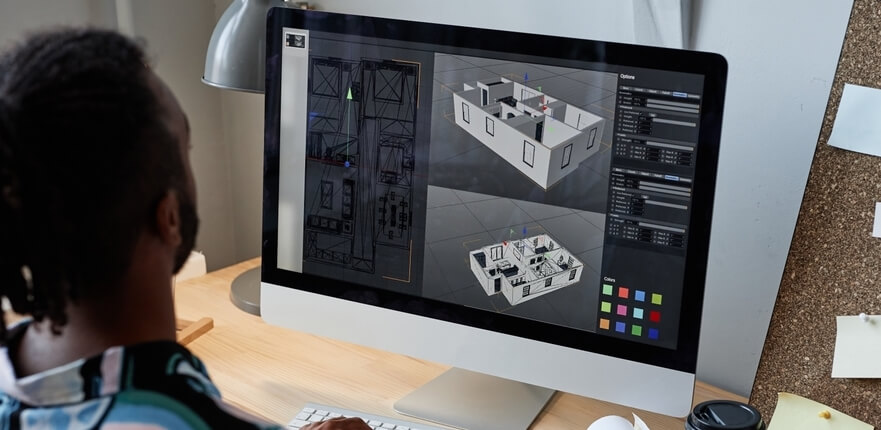3D modelling in surveying means creating a 3D computer model of a structure or building. The 3D model provides everyone with an accurate visual representation of its size, shape and texture.
3D modelling can be useful in planning since it can create in-depth 3D designs for buildings and structures that haven’t been built yet. Need to win over key project stakeholders and decision-makers for a proposed development? A 3D model could help to bring your idea to life and give stakeholders an insight into the plans. Building Information Modelling is compulsory for UK public-funded building projects.
Here we go into a little more detail into the impact of 3D modelling on surveying in the UK.
3D modelling saves time and money
3D laser scanning surveys can save significant time and money because they allow architects and building designers to identify issues and defects early on in the process before it gets further down the road and more money is spent.
At Midland Survey, we cherish modern surveying technology and all its wonders. Time is money in the building game. Fortunately, comprehensive 3D data capture surveys prevent staff in building or renovation projects from needing to do multiple site visits.

Surveying historical buildings
Historical buildings need to undergo thorough surveying prior to any new renovations or building changes taking place. 3D laser scanning technology is often used today to survey historical buildings. Looking after historic buildings is important, and you want to do your homework with 3D surveys to reduce the risk of there being any costly damage down the line due to a lack of due diligence in the planning stage.
3D modelling is a non-invasive surveying method for historic buildings.
At Midland Survey, using 3D modelling to survey historical buildings is one of our expertise. Find out more in this case study of our handheld 3D scanning project for Oriel College, University of Oxford.
How accurate is 3D survey modelling?
3D scanning is a highly accurate surveying technique, and it can provide you with a representative geometry of a historic building. No need to assume that every wall is a straight line. Got a bend? No problem!
Minimising data loss
On-site data is being collected far more diligently and accurately thanks to 3D modelling. Previously, before advances in technology, measurements and key pieces of data could be missed or lost in translation, but this is no longer the case with 3D laser scanning.
After an intricate 3D modelling survey? Get in contact with Midland Survey today by calling 01926 810 811 or emailing mail@mslsurveys.co.uk.